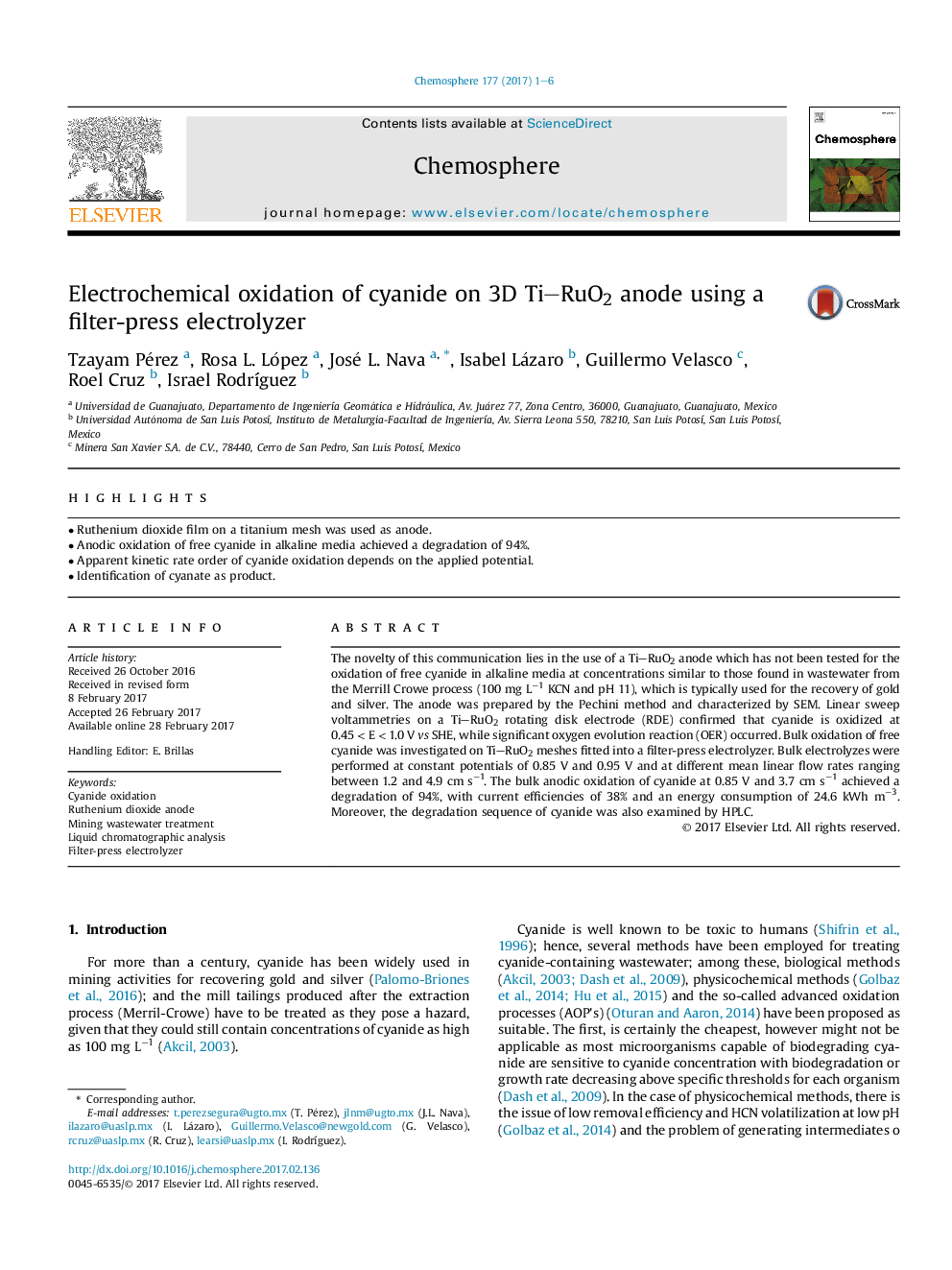| کد مقاله | کد نشریه | سال انتشار | مقاله انگلیسی | نسخه تمام متن |
|---|---|---|---|---|
| 5746306 | 1618794 | 2017 | 6 صفحه PDF | دانلود رایگان |

- Ruthenium dioxide film on a titanium mesh was used as anode.
- Anodic oxidation of free cyanide in alkaline media achieved a degradation of 94%.
- Apparent kinetic rate order of cyanide oxidation depends on the applied potential.
- Identification of cyanate as product.
The novelty of this communication lies in the use of a Ti-RuO2 anode which has not been tested for the oxidation of free cyanide in alkaline media at concentrations similar to those found in wastewater from the Merrill Crowe process (100 mg Lâ1 KCN and pH 11), which is typically used for the recovery of gold and silver. The anode was prepared by the Pechini method and characterized by SEM. Linear sweep voltammetries on a Ti-RuO2 rotating disk electrode (RDE) confirmed that cyanide is oxidized at 0.45 < E < 1.0 V vs SHE, while significant oxygen evolution reaction (OER) occurred. Bulk oxidation of free cyanide was investigated on Ti-RuO2 meshes fitted into a filter-press electrolyzer. Bulk electrolyzes were performed at constant potentials of 0.85 V and 0.95 V and at different mean linear flow rates ranging between 1.2 and 4.9 cm sâ1. The bulk anodic oxidation of cyanide at 0.85 V and 3.7 cm sâ1 achieved a degradation of 94%, with current efficiencies of 38% and an energy consumption of 24.6 kWh mâ3. Moreover, the degradation sequence of cyanide was also examined by HPLC.
Journal: Chemosphere - Volume 177, June 2017, Pages 1-6